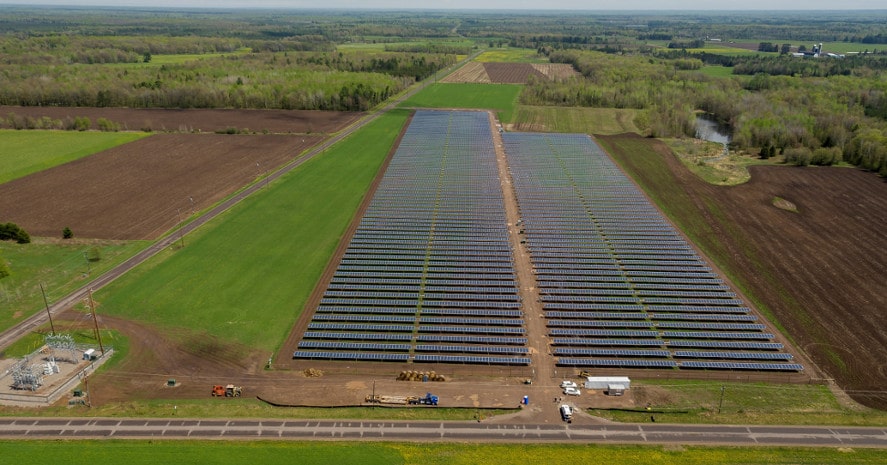In light of the ever-growing threat of climate change and the havoc it will wreak on his state’s “iconic agricultural, hunting, fishing, and outdoor recreation opportunities,” Wisconsin Governor Tony Evers (D) has signed Executive Order 38, an order “Relating to Clean Energy in Wisconsin.”
While vague to say the least, the title is accurate, as Executive Order 38 calls on the state’s Department of Administration to create an Office of Sustainability and Clean Energy, which will then be tasked with “Ensuring all electricity consumed within the State of Wisconsin is 100 percent carbon-free by 2050.”
Outside of that most paramount action, the order also demands increased clean energy workforce training initiatives, to be carried out in partnership with the University of Wisconsin System and Wisconsin Technical College System on a public education level and private and non-profit workforce development programs and labor organizations and the Wisconsin Manufacturing Extension Partnership on a more workforce development level.
This executive order comes at a pivotal time for the Badger State’s solar industry. To date Wisconsin has developed very, very little solar, a grand total of just 68 MW as of the end of Q1 2019. However the state has seemed to shake that stagnant stink and just earlier this year state regulators approved power contracts for two large solar projects totaling 450 MWac: Invenergy’s Badger Hollow Solar Farm in southern Wisconsin’s Iowa County and NextEra’s Two Creeks Solar project, in Manitowoc and Kewaune Counties.
Badger Hollow Solar Farm
- Capacity: 300 MWac/408 MWdc
- Developer: Invenergy
- Location: Iowa County
- Mounting system: single axis trackers
Two Creeks Solar
- Capacity: 150 MWac/213 MWdc
- Developer: NextEra
- Location: Manitowoc and Kewaune County
- Mounting System: single axis trackers
- Modules: thin film or monocrystalline silicon
Both projects are expected to be in service by the end of 2021 and have deals for the generated power in place. Wisconsin Public Service and Madison Gas & Electric have contracted to purchase the entire output of the Two Creeks Solar Farm and 150 MW of the output of the Badger Hollow farm, respectively.
Unfortunately 450 MWac are not nearly enough to scratch the 100% carbon -free by 2050 itch, but fret not, as Renew Wisconsin notes that two different utilities have announced power contracts with two solar projects totaling 249 MW, while the Richland County Board of Zoning gave its approval for a 50 MW solar project in the town of Buena Vista.
These seven projects, assuming they all reach commercial operation, will clock in at 749 MW, a total which experts have relayed is enough to supply 2.1% of the state’s annual electricity needs. Using that math, each 250 MW of development represents 0.7% of the state’s annual electricity need. Keep that number handy.
And those are just the projects that have made progression in the development stage. The interconnection queue of grid operator MISO shows even more action being taken around the state. In Wisconsin alone there are 38 projects in the queue, totaling well over 5 GW in capacity.
To give some sort of context, though the math may not be totally perfect, 5 GW translates into roughly 14% of the state’s annual electricity usage. That’s a significant portion, however considering those figures are from the interconnection queue, it’s fair to assume that good portion of those projects will never see the light of day. That being said, solar will not be the only renewable resource developed in Wisconsin to meet the goals of the executive order, so 14% is by no means a bad place to start.
This content is protected by copyright and may not be reused. If you want to cooperate with us and would like to reuse some of our content, please contact: editors@pv-magazine.com.









By submitting this form you agree to pv magazine using your data for the purposes of publishing your comment.
Your personal data will only be disclosed or otherwise transmitted to third parties for the purposes of spam filtering or if this is necessary for technical maintenance of the website. Any other transfer to third parties will not take place unless this is justified on the basis of applicable data protection regulations or if pv magazine is legally obliged to do so.
You may revoke this consent at any time with effect for the future, in which case your personal data will be deleted immediately. Otherwise, your data will be deleted if pv magazine has processed your request or the purpose of data storage is fulfilled.
Further information on data privacy can be found in our Data Protection Policy.